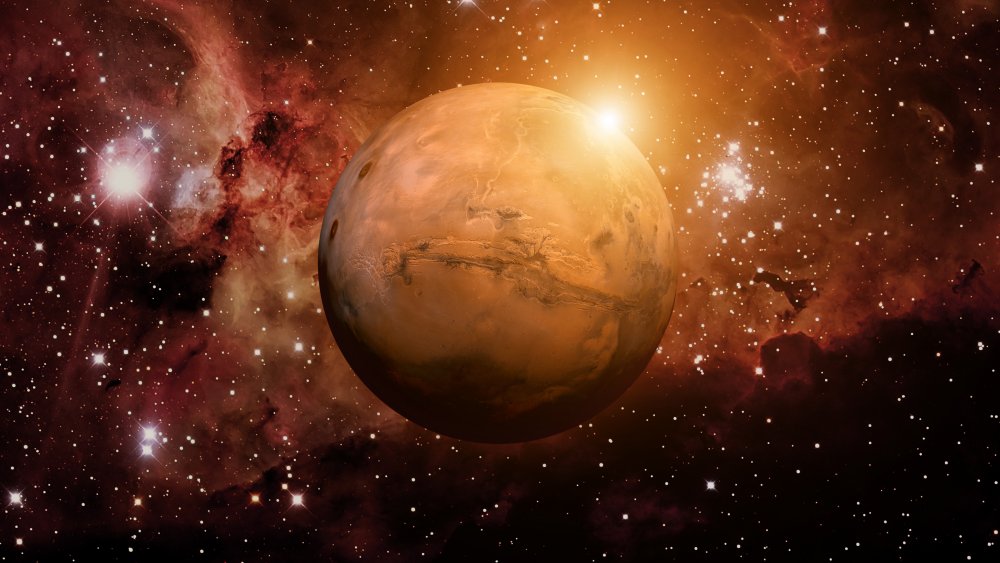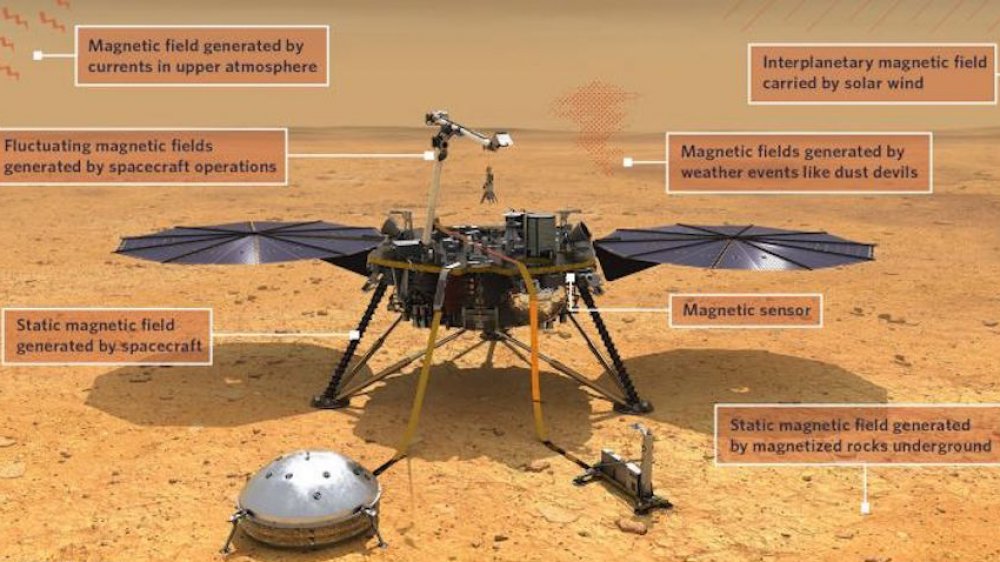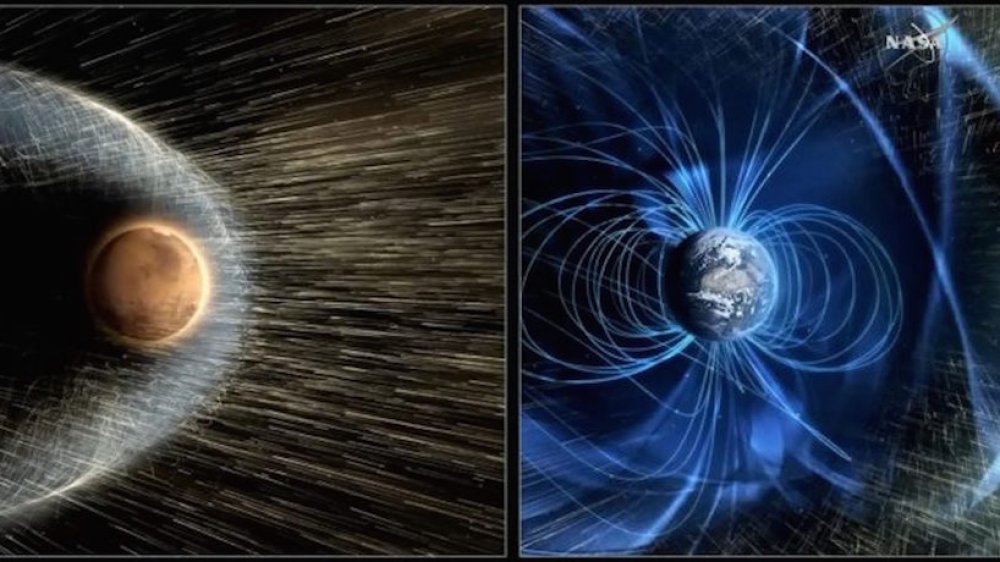Strange Magnetic Fields Around Mars Rover 10x Stronger Than Expected
If there's one thing NASA loves, it's driving golf carts around the surface of Mars.
Although Elon Musk may be worried that humans won't colonize the red planet in his lifetime, according to the Independent, at least Earthlings have the unquestionable ability to land rovers on Mars' surface. Curiosity grabs the most headlines these days, but recently, NASA's InSight lander — which first touched down on the fourth rock from the sun back in November, 2018 — beamed back some unexpected findings about the red planet's magnetic fields: As explained by Science Alert, the magnetic field measured by InSight, inside the crater where it landed, is ten times stronger than researchers anticipated. This region of Mars' Elysium Planitia has been nicknamed "Homestead hollow," and here's why these results matter.
Something in the Martian soil is highly magnetized
Before InSight started waving instruments around, most magnetic field data from Mars came from satellites in orbit, according to Science Alert. These kinds of long-distance data sets have their limitations, and as the study's lead author, Professor Catherine Johnson, pointed out, "The ground-level data give us a much more sensitive picture of magnetization over smaller areas, and where it's coming from. In addition to showing that the magnetic field at the landing site was ten times stronger than the satellites anticipated, the data implied it was coming from nearby sources."
Wait, did you catch that? The part where these crazy magnetic fields in the crater are likely linked to some kind of localized source? Although it's probably not alien life, understanding Mars' magnetosphere is a crucial step to understanding what conditions on the surface may have been like billions of years ago. Thanks to evidence collected by past missions, scientists are pretty sure that the ancient Martian surface was temperate and wet. That kind of environment could have potentially supported primitive life. Yup. Ancient aliens. In order to have sustained its pleasant climate, Mars must have had a magnetosphere comparable in strength to Earth's — and that's important, because it's likely the loss of that magnetosphere that transformed Mars into a frozen desert.
What magnetized rocks say about ancient conditions on Mars
According to data gathered on Mars missions, scientists believe that something "switched off" the martian magnetic field approximately 4.2 billion years ago. That cleared the way for solar winds to batter the planet, stripping away its atmosphere and sterilizing the surface.
What does this have to do with the new data? Johnson believes that the surprisingly powerful magnetic field in Homestead hollow is coming from much older rocks, buried somewhere beneath the crater. Most rocks on the surface of Mars are too young to have been magnetized by the planet's primordial magnetic field. Older rocks, on the other hand, might still carry the magnetic marker of these ancient conditions. If Johnson's hypothesis proves correct, humanity will inch closer to understanding what the red planet was like billions of years ago, and whether it may have hosted early life.


